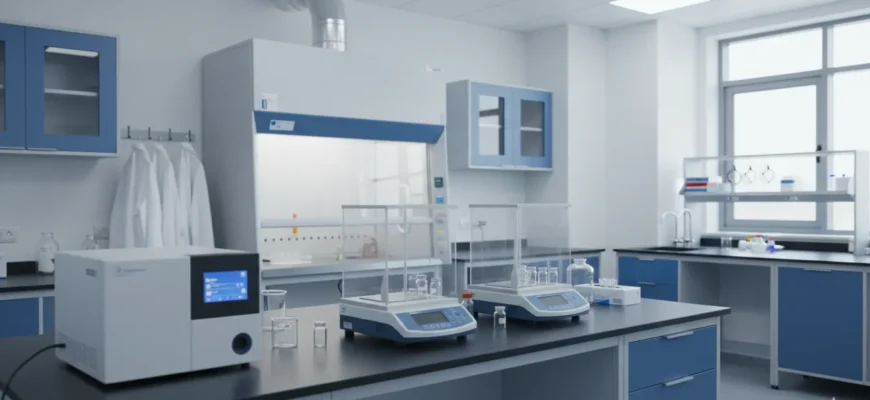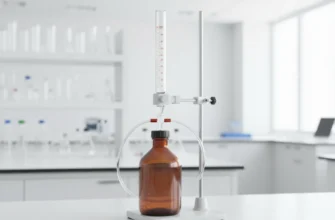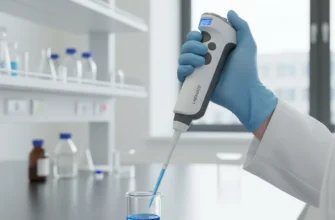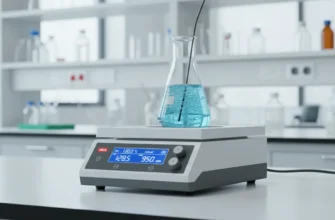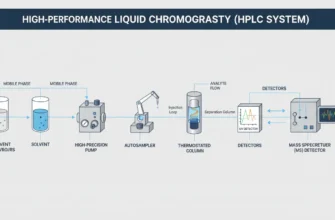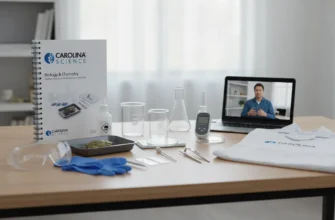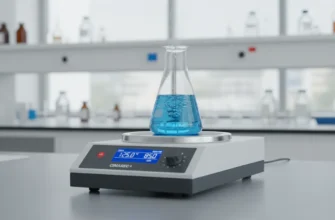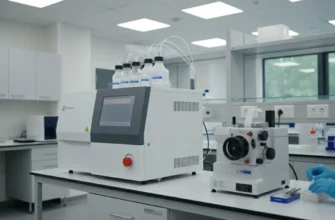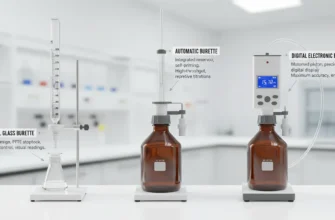Essential Lab Equipment for Every Science Laboratory: Updated 2025 Edition
Key Highlights
Every science lab requires essential laboratory equipment for measurement, sample preparation, and chemical analysis. Modern analytical balances provide precision measurements with readability down to 0.0001g (0.1mg), while digital and infrared thermometers offer enhanced accuracy and convenience. Key safety equipment, including lab coats, safety goggles, and chemical-resistant gloves meeting EN 374 standards, remains non-negotiable for lab safety. Advanced instrumentation like centrifuges, spectrophotometers, and Class II biosafety cabinets are essential for biological and chemical analysis. Energy-efficient equipment and sustainable practices are now major priorities in laboratory design, with labs consuming up to ten times more energy than typical offices. Comprehensive maintenance programs following manufacturer guidelines and regulatory standards ensure equipment reliability and compliance.
Introduction
Welcome to the world of scientific discovery in 2025! Whether you are outfitting a school science lab, a research facility, or an industrial testing center, having the right tools is the first step toward success. The laboratory landscape has evolved significantly, with automation, digitalization, and sustainability becoming key drivers of modern lab design. The proper laboratory equipment is not just about getting accurate results; it’s about ensuring a safe, efficient, and environmentally responsible environment for everyone. This comprehensive guide will walk you through the essential lab supplies and equipment needed to build a functional and secure science lab that meets current standards and future needs.
Key Categories of Essential Laboratory Equipment
Setting up a science lab can feel overwhelming, but breaking down the required laboratory equipment into categories makes it manageable. The most essential tools fall into three main groups: instruments for measurement, tools for preparation, and lab safety equipment. Each category plays a distinct and vital role in the daily operations of a lab. Modern labs also increasingly require specialized equipment like biosafety cabinets and energy-efficient systems to meet contemporary research demands.
From analytical balances with 0.0001g precision for exact weighing to advanced digital systems for sample handling, every piece of equipment serves a specific purpose. In the following sections, we will explore these key categories in detail, helping you understand what you need and why. For new laboratories, begin by creating a comprehensive checklist that includes basic safety gear, precision measurement tools, sample handling supplies, heating equipment, ventilation systems, and sustainable storage solutions.
Measurement Instruments: Balances, Thermometers, and pH Meters
In any science lab, accuracy is everything. Measurement instruments like analytical balances, thermometers, and pH meters are the foundation of reliable scientific research. Modern analytical balances offer weighing capacities from 60g to 520g with exceptional readability of 0.0001g (0.1mg), providing the precision necessary for demanding applications. These instruments incorporate advanced features like internal calibration, electromagnetic force restoration, and draft-free weighing chambers.
Contemporary thermometer technology has expanded beyond traditional mercury-in-glass instruments. Digital thermometers with readabilities of ±0.1°C, infrared thermometers for non-contact measurement (accurate to ±0.5°C), and resistance temperature detectors (RTDs) offering ±0.01°C precision are now standard in modern laboratories. The choice depends on your application requirements, with infrared models ideal for sterile environments and RTDs perfect for pharmaceutical applications requiring maximum accuracy.
Laboratory pH meters in 2025 feature advanced capabilities including automatic temperature compensation, multi-point calibration (1-5 points), and built-in data logging for up to 4000 measurements. Modern units provide pH accuracy of ±0.002 pH units and include features like electrode condition monitoring and GLP compliance documentation.
Essential measurement specifications:
-
Analytical Balances: 0.0001g readability, internal calibration, response time <10 seconds
-
Digital Thermometers: ±0.1°C accuracy, data logging capabilities, USB connectivity
-
pH Meters: ±0.002 pH accuracy, automatic temperature compensation, multi-buffer calibration
Preparation Tools: Beakers, Flasks, and Pipettes
Before any analysis can happen, you need to prepare your samples effectively. Traditional glassware remains fundamental, but modern preparation tools incorporate improved materials and designs. Beakers, flasks, and pipettes are available in various materials including borosilicate glass, chemically resistant plastics, and specialized stainless steel formulations. These tools must withstand chemical exposure while maintaining dimensional stability and cleanliness.
Sustainable alternatives are gaining prominence in 2025, with many labs transitioning to reusable glassware systems that reduce plastic waste while maintaining sterility. Proper preparation includes sterilization at 180°C for 120 minutes, which effectively decontaminates glassware without compromising its integrity.
AI-powered pipetting systems represent a significant advancement, incorporating real-time decision-making and adaptive learning to optimize volume transfers based on sample characteristics. These systems enhance accuracy while reducing variability in complex protocols, particularly valuable for high-throughput screening applications.
Key preparation tool features:
-
Beakers: Chemical-resistant materials, clear volume markings, pour spouts for safety
-
Flasks: Sloped sides to prevent splashing, various neck designs for specific applications
-
Pipettes: Digital displays, adjustable volumes, contamination-resistant materials
Safety Essentials: Personal Protective Equipment and Standards
Laboratory safety remains the highest priority, with updated standards and improved materials enhancing protection in 2025. Personal protective equipment (PPE) must meet current European and international standards to ensure adequate protection against chemical, biological, and physical hazards.
Modern safety gloves must comply with EN 374 standards for chemical protection, with specific requirements for permeation resistance. Type A gloves provide protection against at least 6 test chemicals for minimum 30 minutes each, while Type B offers protection against 3 chemicals, and Type C against 1 chemical for at least 10 minutes. Nitrile gloves have largely replaced latex due to reduced allergy risks and superior chemical resistance.
Laboratory coats and protective clothing must be constructed from appropriate materials and maintained according to manufacturer specifications. The pH of gloves should be between 3.5 and 9.5, and chromium (VI) content must be below 3 mg/kg in leather products.
Eye protection standards require safety goggles meeting EN 166 specifications, with appropriate impact resistance and chemical splash protection. Face shields may be necessary for specific high-risk applications involving volatile chemicals or potential projectiles.
Current safety equipment requirements:
-
Lab Coats: Chemical-resistant materials, appropriate coverage, regular maintenance
-
Safety Gloves: EN 374 compliance, chemical-specific selection, proper fit testing
-
Eye Protection: EN 166 certified, chemical splash protection, comfortable extended wear
Advanced Laboratory Equipment for Chemical Analysis
Once samples are measured and prepared safely, specialized equipment enables sophisticated analysis and experimentation. Modern laboratories require instruments that provide precise environmental control and analytical capabilities while meeting energy efficiency standards.
Centrifuges and Spectrophotometers
Modern centrifuges incorporate advanced safety features including automatic rotor recognition, imbalance detection, and programmable speed/time settings. High-speed models accommodate various tube sizes and provide consistent separation performance essential for molecular biology applications. Temperature-controlled centrifuges maintain sample integrity during extended runs.
Spectrophotometers in 2025 feature enhanced optical systems, digital connectivity, and automated measurement protocols. These instruments measure light absorption to determine compound concentrations with precision suitable for quantitative analysis in chemistry and biochemistry applications.
Applications and specifications:
-
Centrifuges: Variable speed control, safety interlocks, refrigerated options for temperature-sensitive samples
-
Spectrophotometers: UV-visible range capability, automated sampling, data export functionality
Heating and Temperature Control Equipment
Water baths and hot plates provide essential temperature control for chemical reactions and sample preparation. Modern units incorporate digital temperature controllers, safety features, and energy-efficient heating elements. Water baths offer uniform heating through water immersion, while hot plates provide direct surface heating with magnetic stirring capabilities.
Stirring devices ensure uniform mixing and temperature distribution during reactions. Magnetic stirrers with heating capabilities combine temperature control with consistent agitation, essential for synthesis and analytical procedures.
Key features for temperature control:
-
Water Baths: Digital temperature control, safety alarms, uniform heating
-
Hot Plates: Magnetic stirring capability, chemical-resistant surfaces, programmable controls
-
Stirring Devices: Variable speed control, timer functions, chemical-resistant construction
Fume Hoods and Ventilation Systems: 2025 Safety Standards
Working with volatile or toxic chemicals requires advanced safety measures that comply with updated regulations. ANSI/ASSP Z9.5-2022 establishes current minimum requirements for laboratory ventilation systems, including specific standards for fume hoods, gloveboxes, and exhaust systems.
Modern fume hoods must maintain face velocities between 0.3-0.5 m/s (80-120 feet per minute) with the sash at 18 inches. High-performance designs incorporate advanced airflow controls, energy-efficient motors, and monitoring systems that provide real-time performance feedback. Annual testing according to ASHRAE 110 standards ensures continued compliance and safety.
Laboratory ventilation management plans are now required, encompassing system design, commissioning, performance testing, and maintenance protocols. These comprehensive programs ensure personnel protection while optimizing energy efficiency – a critical consideration as laboratories consume up to ten times more energy than typical office buildings.
Current ventilation requirements:
-
Face Velocity: 0.3-0.5 m/s at working sash height
-
Testing Standards: Annual ASHRAE 110 compliance testing
-
Management Plans: Comprehensive ventilation oversight programs
-
Energy Efficiency: Variable air volume systems with intelligent controls
Biosafety Cabinets: Essential for Biological Work
Class II biosafety cabinets are essential for laboratories handling biological materials, providing both personnel and product protection through HEPA-filtered airflow systems. These cabinets maintain negative pressure for user protection while providing sterile downflow air for sample protection.
Modern biosafety cabinets feature LED lighting systems, touchscreen controllers, and energy-efficient DC ECM blowers that reduce power consumption by up to 70%. ULPA filters provide 99.9995% efficiency against 0.12μm particles, ensuring maximum protection for both users and samples.
Specifications vary by type: Type A2 cabinets recirculate 70% of air while exhausting 30%, while Type B2 cabinets provide 100% exhaust for work with toxic chemicals or radionuclides. Cabinet selection depends on specific application requirements and institutional safety protocols.
Biosafety cabinet features:
-
Filtration: ULPA filters with 99.9995% efficiency
-
Airflow: Negative pressure operation with laminar downflow
-
Controls: Digital monitoring systems with alarm functions
-
Energy Efficiency: DC ECM blowers for reduced power consumption
Sourcing Laboratory Equipment: Modern Supplier Landscape
The laboratory equipment market in 2025 is dominated by several major suppliers offering comprehensive product portfolios and services. Thermo Fisher Scientific leads the market with the broadest range of instruments and consumables, followed by Agilent Technologies specializing in analytical chemistry, and BD focusing on clinical diagnostics and flow cytometry.
Purchasing considerations have evolved to include sustainability metrics, energy efficiency ratings, and total cost of ownership calculations. Many suppliers now offer energy-efficient alternatives, recycling programs, and sustainability consulting services to help laboratories reduce their environmental impact.
Digital procurement platforms streamline equipment sourcing with features like automated inventory management, maintenance scheduling, and performance tracking. These systems integrate with Laboratory Information Management Systems (LIMS) to optimize workflow efficiency and regulatory compliance.
Leading equipment suppliers:
-
Thermo Fisher Scientific: Comprehensive instrumentation and consumables
-
Agilent Technologies: Analytical chemistry specialization
-
BD (Becton Dickinson): Clinical diagnostics and flow cytometry
-
Mettler Toledo: Precision weighing and measurement
-
VWR/Avantor: Consumables and chemical distribution
Equipment Maintenance and Regulatory Compliance
Preventive maintenance programs are essential for ensuring equipment reliability, accuracy, and regulatory compliance. Modern maintenance strategies incorporate predictive analytics, automated scheduling, and comprehensive documentation systems that support quality management requirements.
Regulatory frameworks including CLIA (Clinical Laboratory Improvement Amendments) and FDA guidelines establish specific maintenance requirements for clinical laboratory equipment. These regulations mandate regular calibration, quality control testing, and documentation of all maintenance activities.
Best practices include daily visual inspections, weekly performance checks, monthly calibration verification, and annual comprehensive servicing. Digital maintenance management systems track service history, predict failure patterns, and optimize maintenance schedules to minimize downtime while ensuring compliance.
Maintenance program components:
-
Daily Tasks: Visual inspections, cleaning, basic function checks
-
Weekly Tasks: Calibration verification, preventive lubrication
-
Monthly Tasks: Comprehensive performance testing, filter replacement
-
Annual Tasks: Complete calibration, professional servicing, compliance documentation
Sustainable Laboratory Practices in 2025
Energy efficiency has become a critical consideration in laboratory design and equipment selection. Modern laboratories implement smart ventilation systems, energy-efficient freezers, and automated shutdown protocols to reduce power consumption. LED lighting, variable-speed motors, and intelligent control systems can reduce energy costs by 30-50% compared to traditional equipment.
Waste reduction strategies focus on minimizing single-use plastics, implementing comprehensive recycling programs, and adopting circular economy principles. Reusable glassware systems, when properly sterilized, provide equivalent performance to disposable alternatives while significantly reducing environmental impact.
Green chemistry practices emphasize safer reagents, reduced solvent consumption, and environmentally friendly analytical methods. These approaches benefit both environmental sustainability and worker safety by reducing exposure to hazardous chemicals.
Sustainability initiatives:
-
Energy Management: Smart HVAC systems, efficient equipment, automated controls
-
Waste Reduction: Reusable materials, comprehensive recycling, packaging optimization
-
Green Chemistry: Safer reagents, reduced solvent use, environmentally friendly methods
-
Water Conservation: Closed-loop systems, recirculation technologies, usage monitoring
Conclusion
In 2025, laboratory equipment selection requires balancing performance, safety, sustainability, and regulatory compliance. From precision analytical balances with 0.0001g readability to energy-efficient fume hoods meeting ANSI/ASSP Z9.5-2022 standards, modern laboratories demand sophisticated instrumentation that delivers reliable results while minimizing environmental impact.
Technology integration through automation, digitalization, and smart systems is transforming laboratory operations, enabling higher throughput, improved accuracy, and enhanced safety. Sustainability considerations are no longer optional but essential for responsible laboratory management and regulatory compliance.
Comprehensive maintenance programs ensure equipment longevity, accuracy, and compliance with evolving regulatory requirements. By investing in quality equipment from reputable suppliers and implementing robust maintenance protocols, laboratories can achieve optimal performance while meeting contemporary standards for safety, efficiency, and environmental responsibility.
Frequently Asked Questions
How should modern laboratory equipment be cleaned and maintained?
Follow manufacturer-specific protocols using appropriate cleaning agents and calibration schedules. Implement preventive maintenance programs with daily inspections, weekly calibrations, and annual professional servicing. Digital maintenance management systems help track service history and ensure regulatory compliance.
What are the differences between new and refurbished lab equipment in 2025?
New equipment offers latest technology, full warranties, and energy-efficient designs meeting current standards. Refurbished equipment provides significant cost savings (often 30-50% less) while maintaining functionality through professional testing and certification. Consider total cost of ownership including energy consumption and maintenance requirements.
What sustainable options are available for science laboratories?
Energy-efficient equipment with smart controls, reusable glassware systems, comprehensive recycling programs, and green chemistry alternatives. LED lighting, variable-speed ventilation systems, and automated shutdown protocols can reduce energy consumption by 30-50%. Many suppliers offer sustainability consulting and equipment recycling programs.
What are the current safety standards for laboratory ventilation?
ANSI/ASSP Z9.5-2022 establishes minimum requirements including face velocities of 0.3-0.5 m/s for fume hoods, annual ASHRAE 110 testing, and comprehensive ventilation management plans. Modern systems incorporate intelligent controls and monitoring systems for optimal safety and energy efficiency.
How do I select appropriate biosafety cabinets for biological work?
Choose Class II Type A2 for general microbiological work with 70% air recirculation, or Type B2 for work with toxic chemicals requiring 100% exhaust. Modern cabinets feature ULPA filtration (99.9995% efficiency), touchscreen controls, and energy-efficient blowers. Ensure NSF/ANSI 49 certification and appropriate installation with building exhaust systems.

